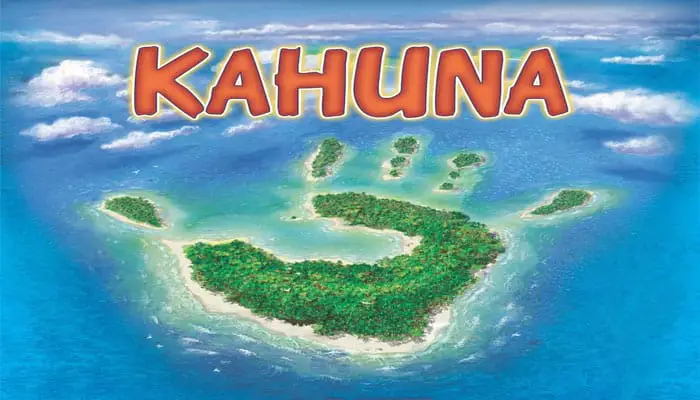
Two Kahuna - ancient sorcerers of the Pacific - want to find out who is more powerful. To this end, they compete to bring as many of the twelve islands as possible under their control. Both players build bridges between the islands of the South Seas.
When a player has established a majority of the possible bridges to an island, as a sign of power, the player places a Kahuna token on the island.
Components
- 1 Game board depicting 12 islands interconnected by dotted lines
- 50 Kahuna bridges (25 black and 25 white)
- 20 Kahuna tokens (10 black and 10 white)
- 24 Island cards (2 per island)
Object of the Game
Three scoring rounds are played. When scoring takes place, you receive points if you have claimed more islands with Kahuna tokens than your opponent. …


